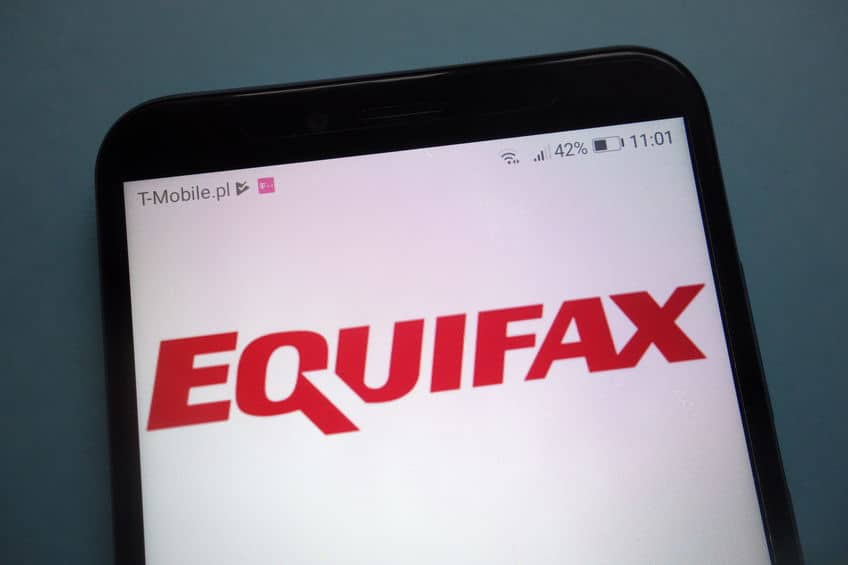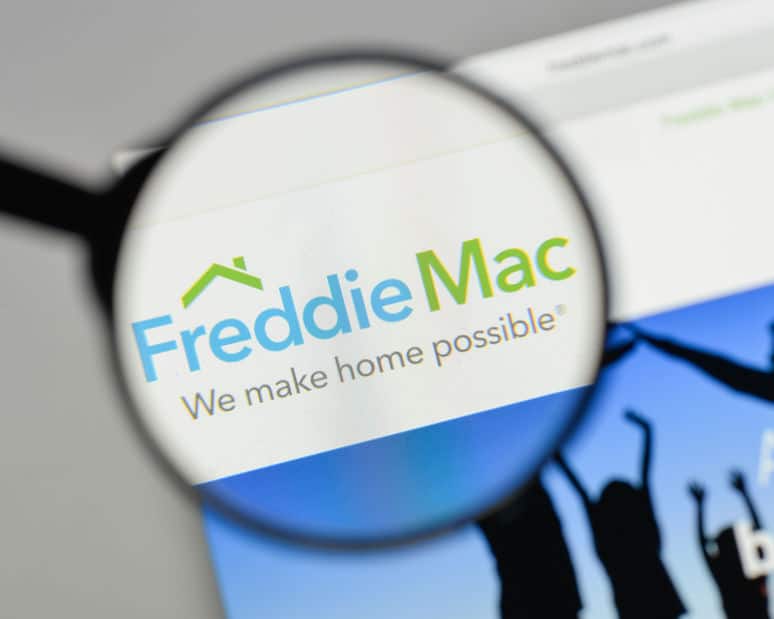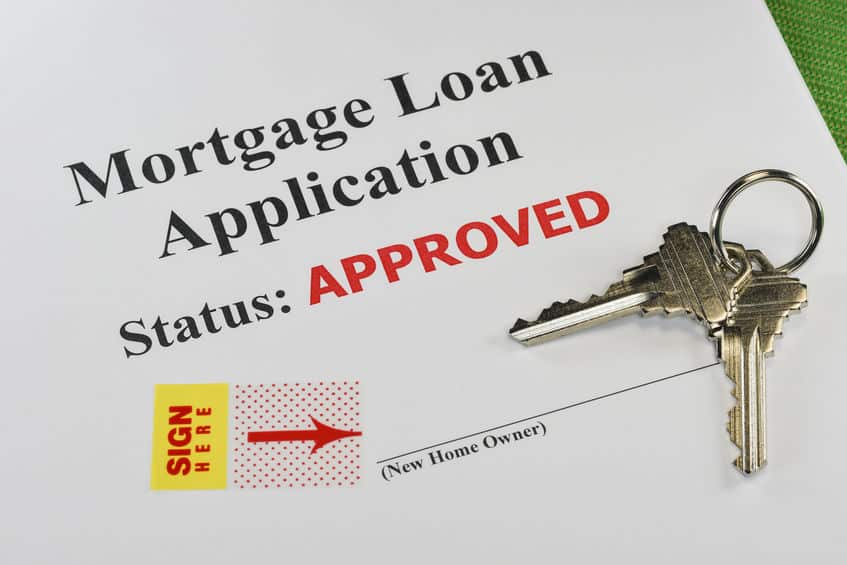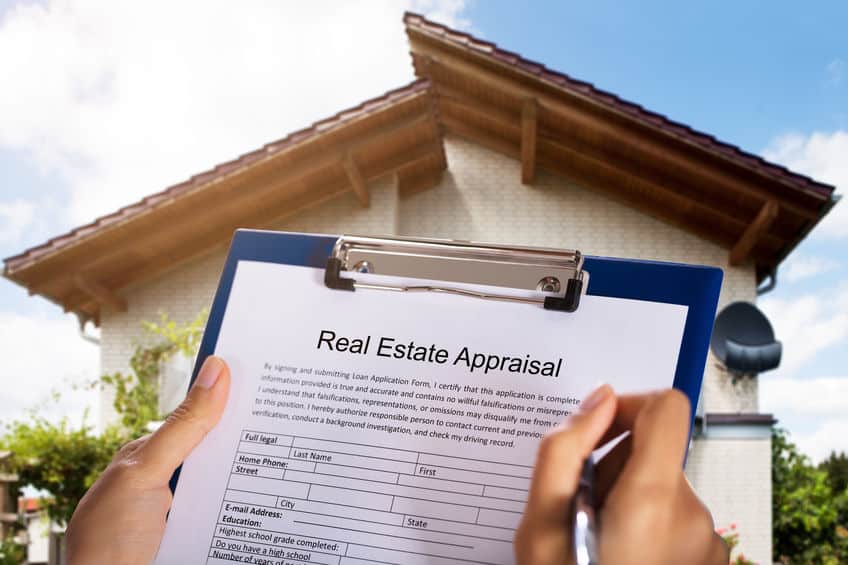The average house price in the United States is approximately $235,000, and this figure has increased dramatically over the last several decades. While the actual cost of real estate in your area may differ dramatically from the national average, many home buyers need or prefer to finance their purchase with a home mortgage. A home mortgage is a secured loan that uses the real estate as collateral. When you begin shopping around for a home loan, you will quickly notice that there are considerable variations in rates, costs, terms and other factors.
Table of Contents
- How a Mortgage Loan Works
- Pros and Cons of a Mortgage
- The Different Types of Mortgages
- Mortgage Loan Types
- How to Qualify for a Mortgage
- How Much House Can You Afford?
- Shopping for the Best Mortgage Rates
- Direct Lenders vs Mortgage Brokers
- Closing on Your Loan
- Common Myths about Mortgages
- The Bottom Line
How a Mortgage Loan Works
When you finance your home purchase with a mortgage, your lender provides you with a large sum of money that is used to pay the real estate sales price and perhaps other related expenses. Any costs not covered by the loan amount must be paid by you. The house is the lender’s collateral. This means that if you default on the loan, the lender could seize your home. Generally, you will be required to make regular monthly payments that are comprised of interest charges and principle payback. At the end of the loan term when the mortgage has been paid in full, the lender releases its claim on the house. At this point, the real estate is owned free and clear by you.
Pros and Cons of a Mortgage
Because of the high cost of real estate, home ownership would be difficult for many people today without a mortgage. Those who do manage to save enough money to pay for a new home entirely with cash may only do so after scrimping and saving for many years. Essentially, a home mortgage makes real estate ownership more affordable and accessible to individuals who have not amassed considerable wealth. Individuals can get into their desired home today, and they can pay for it over many years with regular installment payments that are manageable for their budget.
While the benefits of a home mortgage are clear and substantial, there are some drawbacks. For example, a homeowner’s financial situation could change dramatically, and the homeowner may not be able to sell the home quickly for a sales price that pays off the mortgage in full. The real estate market could plummet, and this could create a situation where the homeowner owes more money on the house than it is worth. These and other similar situations could create extreme financial stress and may even lead to foreclosure in some instances.

The Different Types of Mortgages
While all mortgages are secured by the home, there are numerous types of mortgages that have unique features, benefits and drawbacks. A closer look at these options may help you to decide which type of mortgage is right for your needs.
Fixed Rate Mortgage
A fixed rate mortgage typically has a term of 15, 20 or 30 years. Because it is fully amortizing, the mortgage payment remains fixed for the entire life of the loan. With a fixed rate mortgage, you are able to lock in today’s low interest rate and hold it until the loan is paid in full, until you refinance your loan or until you sell the property. This is ideal in a low interest rate environment, but it may be less attractive if current interest rates are high. The consistency of the mortgage payment amount provides stability for simplified personal budgeting, and fixed rate loans are preferred by many applicants because of this benefit.
Adjustable Rate Mortgage
An adjustable rate mortgage may have a similar term length as a fixed rate mortgage, but the interest rate will fluctuate based on market conditions. Typically, an adjustable rate mortgage has an initial period when the rate is fixed. This period may range from a few months to a few years. After this period, the rate will adjust periodically based on the established terms. The adjusted rate will be determined by adding the predetermined margin to the index rate. The margin remains the same throughout the life of the mortgage. The index rate, which may be the Cost of Funds Index, the Prime Rate or another economic index, can vary dramatically. The periodic rate adjustment means that the mortgage payment may increase or decrease accordingly. In some cases, this may make the mortgage payment not affordable for the homeowner. However, adjustable rate mortgages have periodic and lifetime rate caps. Some also have payment caps. These are designed to protect homeowners from huge and unmanageable rate and payment adjustments.
Second Mortgage
The primary mortgage against a home is also called the first lien. This means that the loan takes the first position in the event of a foreclosure. Commonly, a first lien may provide up to 80 percent of the sales price or home value, but there is variation in this. Many homeowners also take out a second mortgage, which stands behind the first lien. Second mortgages typically provide a loan amount between 5 to 20 percent of the sales price, but variation exists in this area as well. Second mortgages usually have a higher interest rate and a shorter term length than first mortgages. Lenders may limit the combined loan-to-value for the first and second loans.
Reverse Mortgage
A reverse mortgage is taken out by a homeowner who has substantial equity in a home. In many cases, the home is owned free and clear. The lender pays the homeowner regular monthly payments that draw from the home’s equity, and the homeowner can use this as a stable source of income. Reverse mortgages are available for homeowners who are 62 years old or older, so the monthly payments are often used in conjunction with other sources of retirement income to maintain the homeowner’s quality of life. Reverse mortgages often have special clauses that force surrender of the property after the primary homeowner has passed away or moves out of the home.
Mortgage Loan Types
When a lender extends financing to a borrower, the lender assumes substantial financial risk. For example, if the homeowner defaults on the loan, the lender has the right to foreclose on the home and to sell it. The sale proceeds will reimburse the lender for the loan balance, but it may not always cover the full outstanding balance and all related foreclosure, make-ready and sales costs. The federal government offers financial institutions various types of guarantees that dramatically reduce lender risk. These are the specific loan types that you should be aware of before applying for a new mortgage.
Conventional Loans
A conventional loan is issued by a bank or another financial institution without any type of guarantee by the government. Because of the lender’s increased risk, conventional loans usually have a larger down payment requirement and a higher interest rate than other types of home loans. A significant benefit associated with conventional loans is the ability to drop the mortgage insurance premium from the monthly payment when the loan balance reaches 78 percent of the property’s value. With many other types of loans, the only way to eliminate the mortgage insurance premium is to look at a company such as Credible to refinance the mortgage loan at a better rate.
FHA Loans
FHA loans are home mortgages that are backed by the Federal Housing Administration. The FHA offers its guarantee to lenders and banks in exchange for affordable loan terms. FHA loans have competitive interest rates and more lenient underwriting requirements than conventional loans may have. In addition, the down payment requirement for an FHA loan may be as low as 3.5 percent of the sales price. Many banks and mortgage lenders offer both conventional and FHA loan programs.
VA Loans
VA loans are guaranteed by the U.S. Department of Veterans Affairs. They are specifically available to active and former military professionals and reservists as well as their surviving spouses. These loans offer competitive interest rates, which can make home ownership more affordable for qualified individuals. Furthermore, VA loans may enable qualified applicants to purchase a home with no money down.
USDA Loans
USDA loans are backed by the U.S. Department of Agriculture, and they are available to qualified applicants for suburban and rural properties in select areas. USDA loans are available without a down payment and have competitive interest rates. In addition, depending on the applicant’s income level in relation to the median income in the local area, the applicant may qualify for a term length up to 38 years. This longer term length generates lower monthly payments.
Conforming Loans
Conforming loans are mortgages that are backed by Fannie Mae or Freddie Mac. These guaranteed loans may have an affordable interest rate, lower fees and more lenient underwriting requirements than nonconforming loan. A key attribute of a conforming loan is the loan amount. In most areas of the country, the maximum loan amount for a conforming loan is $484,350 for 2019. In select areas, the maximum loan amount may be set at $726,525 or more. Compared to nonconforming loans, conforming loans may have more lenient underwriting requirements, more leeway regarding credit scores, a lower down payment and other advantageous features. An important lender benefit of conforming loans is the lender’s ability to easily sell them after closing. By selling the loans, the lender is able to make more loans to other applicants and can generate a greater profit as a result.
Jumbo Loans
A jumbo loan is also known as a nonconforming loan. This type of mortgage has a loan amount that exceeds the conforming loan limits. Because of the higher loan amount, lenders assume greater risk for making a jumbo loan. As a result, jumbo loans usually have a higher interest rate, strict underwriting requirements and the requirement for a down payment of up to or more than 20 percent.

How to Qualify for a Mortgage
As you can see, qualification requirements for a mortgage can vary dramatically from program to program as well as from lender to lender. Generally, however, qualifications are based on the applicants’ credit scores and income as well as the down payment amount and the debt-to-income ratio.
Credit Scores: Your credit scores are a numerical representation of your creditworthiness. The three main credit reporting agencies analyze similar factors, but they do so in different ways. Because of this, you typically have three different credit scores. The factors that are analyzed include payment history, the length of time that your accounts have been active, the outstanding balance in relation to available credit, the number of revolving accounts and more. When your credit scores are lower, the lender perceives greater risk when making a loan to you. Because of this, lenders generally have a minimum credit score requirement. In addition, mortgage lenders may charge a higher rate if your credit scores indicate greater risk.
Debt-to-Income Ratio: Mortgage lenders usually have strict debt-to-income ratios, which helps them determine if you can afford to make the new mortgage payment regularly. The debt-to-income ratio is calculated by dividing your monthly debt payments by your gross monthly income. The monthly debt payment figure includes car payments, student loan payments and other regular debt payments. It also takes into account the new mortgage payment, including principal, interest, taxes, home insurance and mortgage insurance. It does not take into account utilities, childcare costs, grocery expenses or other living expenses that you may also be responsible for. Commonly, lenders want to see a debt-to-income ratio at or below 43 percent, but there is variation in this requirement.
Income: Your income will be analyzed through the debt-to-income ratio calculation, and the gross income figure used in this calculation must be verified by the lender. Salaried or hourly workers typically will provide tax returns for the last two to three years as well as paystubs from the last month or two to document income. Employment may also be verified directly with your employer. If you are self-employed or have other independent sources of income, such as rental property income, you may be required to provide another year of tax returns and bank statements for a few additional months. The exact income verification requirements can vary dramatically by lender as well as by your specific sources of income.
Down Payment: If your loan program requires you to make a down payment, the lender will verify that you have the funds available to do so. Generally, funds should be available in liquid assets at the time of application. Some lenders accept a gift of funds from a close family member, but this is not universal. In addition to the down payment requirement, lenders will confirm that you have enough cash on hand to cover closing costs and to meet their reserve requirement. The reserve is the amount of money that you will have in your account after closing. Many lenders prefer that you have a reserve balance sufficient to cover the new mortgage payment for at least two to three months.

How Much House Can You Afford?
Many home buyers assume that they can afford the highest loan amount that they qualify for, but this is not actually the case for some people. The lender’s DTI ratio analysis does not take into account living expenses that you need to pay for each month. It also does not take into account your savings and investment contributions, your lifestyle-related expenses, repairs and maintenance costs for the new home and more. Because of this, the lender may approve you for a mortgage payment that is not actually affordable for your budget.
To determine how much house you can afford, you can use the lender’s maximum loan amount as an upper limit. However, you should carefully review your budget to determine a mortgage payment that is reasonable for you. Keep in mind that some expenses will change when you relocate. These factors may include your auto insurance rate as well as expenses for utilities, gas, groceries and more. If you are applying for an adjustable rate mortgage, it is wise to prepare your future budget using the highest possible mortgage payment that you may be required to pay if the rate adjusts upward in the future.
Many people have found themselves to be “house poor,” which means that so much of their income is going toward paying for a large or nice home that they are forced to live on a very tight budget and cannot enjoy the lifestyle they desire. When you determine affordability upfront and prepare for worst-case scenarios, you can reduce the risk of being house poor.

Shopping for the Best Mortgage Rates
The interest rate on a mortgage loan directly affects the monthly payment as well as principle reduction. The rate that you may qualify for will be based on your financial situation and credit scores. Lenders often extend more attractive loan terms to well-qualified borrowers. The loan amount, down payment and type of government guarantee also play a role in the interest rate. Depending on market conditions and other relevant factors, the interest rate that you qualify for can vary by as much as a half-percent or more. While this variation may initially seem like a negligible amount, the impact on your mortgage payment and ability to pay down the loan balance quickly can be significant.
With this in mind, shopping for the best mortgage rates is essential. Lenders advertise their best available rates, and these are usually for well-qualified applicants who can make a large down payment. Most lenders will need to review specific details about your loan request before providing you with a quote. You may need to complete a loan application and agree to a soft credit pull in order to obtain a quote. Because of this, shopping for mortgage rates can take time and energy. However, the effort may be rewarded through more attractive loan terms and financial savings throughout the life of your mortgage.
Should You Buy Points to Lower Your Interest Rate?
At closing, you may be responsible for paying numerous closing costs. One of these may be the lender’s fee. This fee is directly paid to the lender, and it may cover overhead related to processing your loan request as well as the lender’s profit. Generally, this fee is a percentage of the loan amount. When you compare mortgage rates initially, understand that lenders can charge a higher fee in exchange for a lower rate or a lower fee in exchange for a higher rate.
Applicants have the ability to “buy points,” which means that you can pay a higher fee in exchange for a lower interest rate. When you buy points, you essentially increase your closing costs, but you can save money throughout the life of the loan through interest savings. Because each situation is unique, you should crunch the numbers to determine the financial impact of various scenarios. You may also use an online calculator to analyze the scenarios. Generally, buying points is most advantageous if you intend to hold the mortgage for many years.

Direct Lenders vs Mortgage Brokers
You can apply for a mortgage directly with the lender, such as by contacting a bank or a credit union. When you work with a direct lender, you eliminate the middleman from the scenario. By doing so, you will avoid having to pay the middleman’s fee. However, direct lenders usually offer only a few loan programs, which can limit your ability to find the best terms. In addition, if you choose to forgo working with a broker, you are responsible for shopping around with various lenders to find competitive terms.
A mortgage broker, on the other hand, does not work for a specific lender. This is an independent professional who will shop for a loan on your behalf and can save you a substantial amount of time and energy. This individual can provide you with unbiased information and will take time to answer all of your questions. In exchange, you will pay the mortgage broker’s fee at closing. In some cases, the efforts and advice of a mortgage broker may result in financial savings that exceeds the cost of the broker’s services.
Obtaining a Pre-Approval Letter
A pre-approval letter indicates that you meet the lender’s qualifications and that the lender can potentially extend the stated loan terms to you. This can be very important in the home buying process and many real estate agents will ask you if you have one. In order to obtain a pre-approval letter, you must complete a loan application and agree to the lender’s review of your credit report. You also must submit various documents that support the information stated in the loan application. This includes tax returns, bank statements and other documents.
A pre-approval letter is commonly confused with a pre-qualification letter. A pre-qualification letter can be obtained after the lender’s review of your loan application and credit report. Because the lender reviews minimal documentation before issuing a pre-qualification letter, it is less substantial than a pre-approval letter.

The Mortgage Application Process
If you agree to the terms in the pre-approval letter and signal to the lender that you are ready to move forward with the loan application, you may be required to pay for a few expenses upfront. This includes a required appraisal and an optional property inspection. The lender usually orders the appraisal on your behalf. While the appraisal is being completed, the lender will give you a list of documents that are required to finalize the loan application. Typically, your loan request cannot move to the underwriter’s desk and receive final loan approval until you have provided all requested documents. With this in mind, you should provide all required documentation promptly to avoid delays.
During the lender’s review of the documentation, questions may arise that need to be clarified or answered before final underwriting. Once all documentation has been received, the underwriter will review the loan request and make a final determination about approval. After loan approval, you may be able to close on the loan and take ownership of the home within a week or less in many cases.

Closing on Your Loan
The final stage in the loan process is closing. This step is usually completed at an attorney’s office or at a title company. The attorney or title company’s representative coordinates the closing by working with the lender and the borrower. The borrower is required to sign all documentation related to the new loan and to complete the legal conveyance of the property’s ownership. Usually, the paperwork is signed and notarized on-site.
You are required to pay for all outstanding loan fees and expenses at closing. Closing costs may include the lender’s fee, the mortgage broker’s fee, the attorney’s or title company’s fee, title insurance premium, escrows for taxes and insurance and other related expenses. The lender should provide you with an estimate of these fees upfront, but the closing agent will provide you with a final figure several days before closing. Typically, the funds must be wired to the closing office or provided in the form of a cashier’s check or money order. In many cases, closing costs equate to approximately 2 to 3 percent of the loan amount. Keep in mind that you also must pay the down payment at closing.
What Is Included in a Mortgage Payment?
After closing, you are required to make regular mortgage payments to the lender as agreed. Most loans are established with monthly payments. The mortgage payment is always comprised of principal reduction and interest charges. The principal reduction is the portion of the payment that directly reduces the loan balance. During the first several years, the majority of the mortgage payment will be applied to interest charges. As a result, debt reduction during this period of time is slow. However, with each payment, you may notice that the principal reduction increases slowly.
Most home mortgages require borrowers to escrow taxes and insurance, but this may be optional in some cases. When taxes and insurance are escrowed, you will make monthly payments to the lender for these expenses. The lender will hold the allocated funds for you and will pay the expenses on your behalf. The escrow accounts are established at closing. Your mortgage payment may include prorated payments for taxes and insurance. You may also be responsible for mortgage insurance if the loan-to-value exceeds 80 percent.
Tips for Paying Off Your Mortgage Early
To pay off your mortgage early, you must make larger payments or more frequent payments. Some people set up a more advantageous payment structure with their lender. For example, paying half of the required mortgage payment every two weeks means that you will make a full extra payment over the course of a year. This extra payment is comprised entirely of principal debt reduction. By paying principal down now, you decrease interest charges throughout the life of the loan. Other people choose to keep the monthly payment structure, and they pay more than the required minimum payment. If interest rates drop significantly in the future, refinancing the loan may be advantageous. You can also apply any large bonuses, credits, refunds or gifts that you receive directly to principal reduction.
What Happens If You Cannot Pay Your Mortgage?
It takes most people several decades to pay off a mortgage. During this lengthy period of time, your financial situation may change. Serious illness, the loss of a loved one and the loss of a job are common situations that may result in financial stress. If you are unable to make your mortgage payment, you may ask your lender for assistance. Some lenders are willing to extend your loan term for a month so that you can skip your next mortgage payment. Your lender may also help you to determine if you qualify for a loan modification or another form of loan forgiveness. Another option is to sell your home and move to a more affordable house.
Common Myths About Mortgages
Many people have misconceptions about home mortgages. One of these involves the down payment requirement. Decades ago, lenders required you to make a down payment of 20 percent or more, but this is no longer the case. In fact, you may qualify for a mortgage with no money down through some lenders and loan programs.
You may also assume that you need excellent credit to qualify for a mortgage. In reality, you may still be able to get a mortgage if you have average or lower credit scores, but you may be required to make a larger down payment. Your loan may also have a higher interest rate.
There is also confusion about a pre-approval versus pre-qualification. These terms may be used interchangeably by some people, but a pre-approval is based on a lender’s thorough review of bank statements and other documents. It is more comprehensive and more substantial than a pre-qualification.
Another myth is that real estate values always increase. Historically, real estate values have trended upward, but there may be significant fluctuations in value from year to year. In some cases, your property’s value may dip below the original sales price before it rises. This could result in you being underwater with your mortgage for a period of time.
The Bottom Line
Applying for a new mortgage can be stressful and confusing, but you can more easily find a great loan program and navigate through the loan program when you take time to educate yourself upfront. To avoid confusion and to ensure that you make smart financial decisions, ask your lender, mortgage broker and other professionals as many questions as needed throughout the process.












